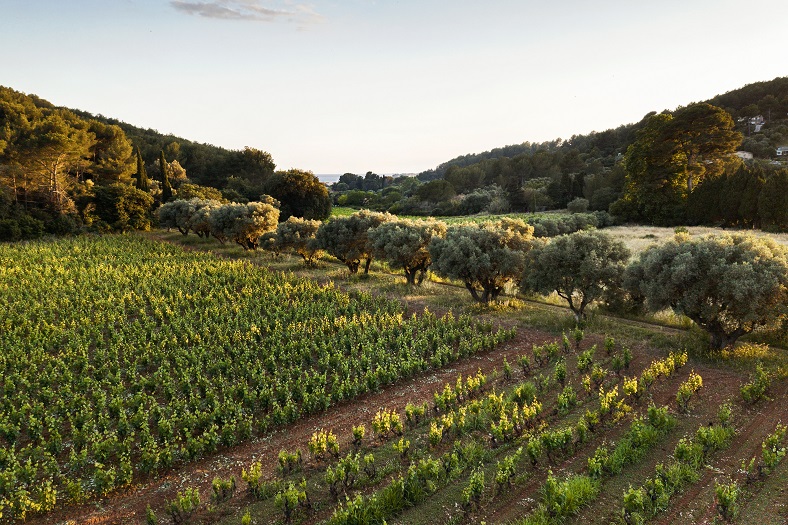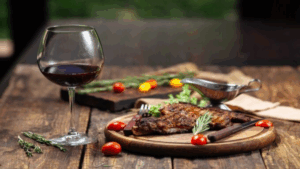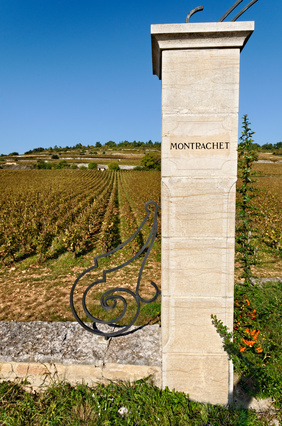
Considered a ‘monument of Provence’ by Olivier Poussier – winner of the World’s Best Sommelier award – Terrebrune is a domain with a story that brings us back to the essential of winemaking: the meeting of a grape variety, a certain climate, a beautiful terroir, and people with a capacity to craft something superb. The magic of nature blossoms in the glass, taking us on a journey to the sunny climes of Provence. We spoke to Jean d’Arthuys who co-manages the property with Reynald Delille.
Domaine de Terrebrune, a new lease of life for Jean d’Arthuys
Jean d’Arthuys has always been a media man, but his passion for wine goes back even further than his dazzling career. Born to a family in the south-west of France, he says he was ‘brought up on good Bordeaux’. President of Bordeaux’s Girondins football team, he had the chance to mingle in the wine world, meeting connoisseurs, exploring his tastes, and gradually getting to grips with the concepts of winemaking.
After having crossed the vineyards of France, visiting more properties than could be counted and getting a sense for the nuances in different terroirs, a seed was planted: the idea of owning his own domain. Ambitious and looking for a bit of adventure, Jean wanted to find a property outside of the classic Bordeaux and Burgundy regions. He considered the Beaujolais, Corsica, and Savoie, before finding his rare pearl in Provence, facing onto the Mediterranean Sea.
Terrebrune’s terroir
Jean came across Terrebrune rather by chance in his explorations of the Bandol. Much to his surprise, he found that the Mourvèdre grape, a capricious varietal that is difficult to manage and late to ripen, is perfectly suited to the appellation’s climate, even more so as the climate crisis accelerates. Already a great fan of cellaring wines, Jean was enchanted by the complex, mineral profile of these wines, as well as their 30- to 40-year aging potential.
The domain itself was founded in 1963 by Georges Delille, father of Reynald, who collaborated with other viticultural pioneers like the Saint-Victor family at Château de Pibarnon and Emile Peyraud from Domaine Tempier. The latter was the generous source of Mourvèdre vines which, how 70 years old, flourish at the foot of Terrebrune and continue to make its reputation what it is.
Terrebrune also stands out from its neighbours thanks to its location on the Massif du Trias, where the earth is rich in fragmented chalk and 250 million years’ worth of underwater folds. The vineyard is really in a perfect spot, not only enjoying the warmth of the sun due to its excellent exposure, but also a steady breeze. This helps to steady the temperature, keeping the vines healthy and fighting off any destructive frost. A climate such as this confers generous heat to the grapes alongside a freshness that avoids an overly-potent profile.
Well-made cellaring cuvées
Wanting to do things by the book, Jean d’Arthuys studied for a diploma in viticulture and oenology from the University of wine before embarking on his exciting mission. His domain is home to cuvées in three colours: red, white, and rosé. Greatly influenced by their terroir, they are striking in their minerality and salinity, with a fine freshness and almost crystalline lightness. Undeniably crafted to be aged, these wines stand out for their beautiful aromatics, including the rosé which is made with the same red varietals. These wines have a strong personality, and the Mourvèdre grape makes itself known, with its typical Provençal character giving off garigue and animal notes.
This is also a domain that goes ‘against the trends’ according to Jean. As well as crafting fleshy wines that improve with age, Terrebrune resists the ‘madness of single-parcel cuvées’, making just one wine per category.
The key to success
Whilst the domain has been certified organic for 20 years now, the Delille family has always made it their mark of pride to respect nature and biodiversity. They even apply some biodynamic principles to their work, without yet having sought an official label.
There is very little intervention as the fruit vinifies, and Georges Delille always wanted to keep some of the bottles in his cellar to pass onto connoisseurs once the vintages have matured. Keeping in mind his ambition to make Terrebrune ‘the Petrus of Provence’, a real gem reserved for enthusiasts seeking authenticity and rarity – the reds are sold five years after bottling.
The vines of Terrebrune currently cover 35 hectares of land, and Jean and Reynald have their sights set on more parcels. This is no small feat in an area that is highly urbanised. There’s also a plan to offer in-depth experiences of the domain through short stays at the property…one to watch!



